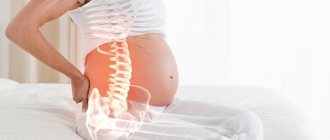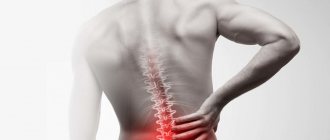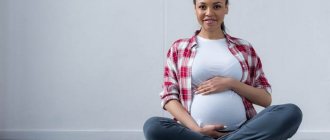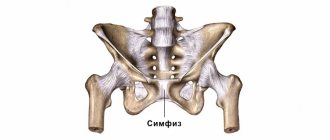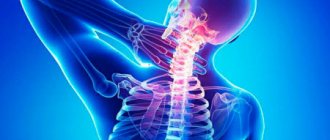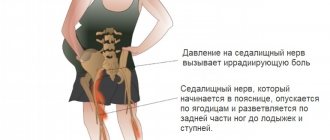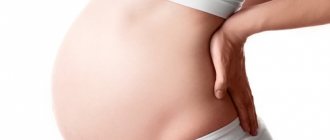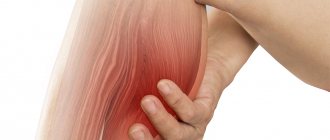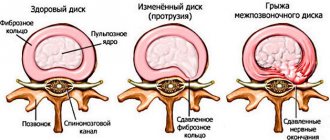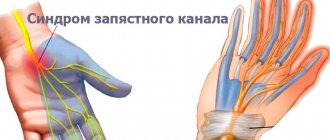13 July 2020
39498
0
4 out of 5
Pregnancy is a happy and at the same time quite difficult period in the life of most women. Over 40 weeks, both the psyche and body of a woman undergoes many changes. And if the awakening of the maternal instinct and trying on a new role as a mother is exclusively positive, then physical changes are not always desirable and equally positive.
african american pregnant woman sitting on yoga mat
One of the most common problems for expectant mothers is back pain, especially in the lower back. In some cases, it is physiological in nature, i.e., it is regarded as the norm, but in other situations it is a sign of pathological changes and requires medical attention. It is because of the changes that occur in the body during pregnancy that chronic diseases worsen and sluggish ones appear. The difficulty lies in recognizing harmless lower back pain during pregnancy from a symptom of the disease, because many medical procedures are contraindicated for expectant mothers. Therefore, if you experience discomfort in your back, you should definitely talk to your doctor about it and, if necessary, contact a specialist, for example, a neurologist or vertebrologist.
Physiological causes of low back pain during pregnancy
During pregnancy, a lot of new processes and transformations take place in a woman’s body. In the earliest stages, hormonal changes come to the fore. The body is preparing for gestation and future childbirth; the hormones produced affect the ligaments and joints. They gradually stretch, which can lead to nagging pain in the lower back. Their presence up to 10 weeks is normal, but only if there is no bloody, brownish vaginal discharge, since this combination of symptoms indicates the possibility of spontaneous miscarriage.
In addition to changing hormonal levels, the uterus gradually enlarges and the center of gravity shifts. For this reason, a woman has to lean back while walking, retract her shoulders and bend in the lower back. As a result, the spine acquires a more pronounced lordosis, i.e. the natural lumbar curve is enhanced, and the muscles are in constant tension. This cannot go unnoticed and provokes back pain. They will especially bother women with weak muscles, those carrying twins or multiple pregnancies. Pain tends to appear or worsen after prolonged standing, sitting, walking or physical activity.
Acute pain is always a sign of abnormalities. Therefore, in such situations you need to see a doctor as soon as possible.
In the third trimester, so-called training contractions often occur, which in some women causes lower back pain. This is due to the beginning of the body’s preparation for childbirth and does not pose a threat to the woman and the fetus. In addition, at this time, a change in the configuration of the pelvic bones occurs, the fetus moves downward, and its head puts more pressure on them and the cervix. This can also cause aching back pain.
The appearance of cramping pain with decreasing intervals between attacks can act as a sign of the onset of labor.
Diseases that can cause lower back pain during pregnancy
Since during pregnancy the immune system decreases and the shape of the spine changes, this contributes to the manifestation of all latent diseases and the exacerbation of chronic pathologies. Therefore, diseases of the urinary, reproductive system and, last but not least, the spine often occur during pregnancy.
The fact is that the increasing load on the spine leads to a sharp creation of unfavorable conditions. Therefore, if a woman already had any disorders before conception, even if she does not know about them, they will progress rapidly during pregnancy, which will result in back pain. The main reasons for their appearance are:
- osteochondrosis;
- protrusions and intervertebral hernias;
- scoliosis.
Osteochondrosis
Osteochondrosis is one of the most common causes of lower back pain during pregnancy. This disease is typically characterized by the development of a degenerative-dystrophic process in the intervertebral discs with a decrease in their thickness. The disease is widespread even among young people and is most often provoked by a sedentary lifestyle, excessive physical activity and excess weight.
With it, pain in the lower back is chronic and aching in nature and intensifies after prolonged standing, sitting, or physical work. It is osteochondrosis that becomes a prerequisite for the occurrence of more severe pathologies of the intervertebral discs of the lumbar spine - protrusions and hernias.
Protrusions and intervertebral hernias
Protrusions are deformations of the intervertebral disc, in which it protrudes into the spinal canal and can compress the spinal roots and nerves of the so-called cauda equina that pass through immediately. This is accompanied by severe pain in the lower back, which radiates to the legs in accordance with the areas of innervation of the compressed nerves, and sensory disturbances. This is called radicular syndrome.
If orthopedic treatment is not followed, the outer lining of the intervertebral disc, called the annulus fibrosus, will rupture and its internal contents (nucleus pulposus) can partially leak into the spinal canal. This is fraught with compression of the spinal cord and pinching of its nerve roots, which will provoke severe pain along the nerves and in the lower back. A large hernia and severe radicular syndrome are an indication for surgical treatment.
The formation of protrusions and herniations of intervertebral discs against the background of weight gain due to fetal growth is one of the most common causes of lower back pain during pregnancy.
Scoliosis
The presence of scoliotic deformity in a woman before pregnancy is a serious prerequisite for the appearance of back pain after conception. The increasing weight and size of the uterus will provoke an increase in the scoliotic arch. This will not only lead to severe lower back pain, but can also contribute to the occurrence of disturbances in the functioning of internal organs. Additional signs of scoliosis are an asymmetry in the position of the pelvic bones and shoulder blades, a difference in the position of the legs and a visible deformation of the back when bending forward.
Kidney diseases
Often lower back pain during pregnancy is caused by the development of kidney diseases, in particular pyelonephritis. It is characterized by an inflammatory process, one of the triggering factors for which is hypothermia or infection. Renal dysfunction can be differentiated by the presence of additional symptoms:
- increased body temperature;
- chills;
- pain and increased frequency of urination;
- change in urine color;
- swelling of the legs.
Also, lower back pain during pregnancy is often caused by urolithiasis or nephrolithiasis. With it, stones of different compositions and degrees of density are formed in the kidneys. Under the influence of physical activity, vibration when moving in a shaking vehicle or other factors, they can move from their places and begin to move along the ureters. This is accompanied by severe back pain, radiating to the groin, lower abdomen and thighs. Often the movement of stones through the ureters is accompanied by the appearance of blood impurities in the urine, due to injury to their mucous membranes by the sharp edges of the stones. Over time, the stone descends into the bladder and the pain subsides. Then it can begin to move again, causing pain in the urethra and blood in the urine.
How to treat?
Frequently occurring physiological pain in the lower segment of the spinal column occurs mainly in the second and third trimesters of pregnancy. They appear due to a shift in the center of gravity and a state of compression by the growing uterus. The following will help to partially relieve pain and make the expectant mother feel better:
- wellness procedures (on the recommendation of a doctor, you can perform physical exercises for pregnant women, go swimming, water aerobics, yoga, Pilates, dancing or exercise on a fitball);
- manual therapy (it is not recommended to perform it at home, as it can worsen the situation - the procedure should only be carried out by a specialist);
- light massage (some people do it themselves, but it’s better to ask your husband or a nurse).
If a pregnant woman has been diagnosed with a disease that causes back pain, treatment is prescribed by a specialist. You cannot self-medicate (it is forbidden to use warming ointments such as Finalgon, Viprosal, Apisatron and take painkillers on your own). Depending on the etiology of the condition, the following is usually prescribed during pregnancy:
- anti-inflammatory drugs, as well as No-shpu to relieve spasms (for pathological conditions of the urinary system);
- droppers with a solution of Actovegin or Magnesia, suppositories Papaverine, Utrozhestan (if there is a threat of miscarriage) (see also: why are Utrozhestan suppositories prescribed during pregnancy?);
- solution or ointment Menovazin, Nurofen-gel for rubbing problem areas during exacerbations of osteochondrosis, radiculitis and other diseases of the musculoskeletal system (we recommend reading: is it possible to take Nurofen while breastfeeding?);
- calcium intake.
Dangerous symptoms
Although lower back pain is often physiological in nature, carelessness can turn tragic for a young family. Therefore, if the pain is acute and severe, it is important to consult a gynecologist, neurologist and urologist as soon as possible, as well as undergo the necessary examinations.
But if back pain is accompanied by the following symptoms, you should immediately seek medical help:
- the appearance of bloody, brownish discharge from the vagina;
- persistent or increasing pain in the lower back that does not go away with rest;
- pain radiates to the legs, groin;
- pain in the lower abdomen;
- increase in body temperature.
Such symptoms may indicate a threat of miscarriage or a serious exacerbation of an existing disease.
Sleep and rest
A woman who has lower back pain during pregnancy needs to improve her sleep. First of all, you should choose a good mattress. A special pillow for pregnant women also helps you relax while sleeping. It is better to sleep on your side to avoid squeezing your internal organs with your growing belly. Properly selected sleepwear will also contribute to complete relaxation.
Read also: How to sleep while pregnant
The expectant mother should get enough sleep. To do this, you need to regularly ventilate the room. Before going to bed, you can take a walk and get some fresh air. To do this, it is better to choose comfortable shoes and clothes for expectant mothers with support for the lower back and abdomen.
Don't ignore naps during the day. If back or lower back pain begins to bother you in the first half of the day, it is better to lie down and rest. When this is not possible, you can use a special bandage for pregnant women.
A proper lifestyle, giving up bad habits and a balanced diet will also contribute to adequate sleep. It is advisable to take vitamins and mineral complexes prescribed by a specialist, which will strengthen the muscles, skeleton and nervous system.
The main thing for an expectant mother during pregnancy is a caring attitude towards herself. The appearance of unpleasant symptoms should not be ignored; it is better to consult a specialist. And if they are not associated with any diseases, try to create the most comfortable conditions for yourself. Products for pregnant women will help with this. You'll find everything you need in the Mothercare catalogue. You can place an order online in just a couple of minutes, and we will quickly deliver your purchase to any address within the Russian Federation.
Diagnosis of the causes of back pain during pregnancy
In order to determine the causes of discomfort in the lumbar region, a woman should initially contact a gynecologist during pregnancy. The doctor will listen to the patient’s complaints and, if any abnormalities are suspected, will conduct an examination for the presence of gynecological diseases. If no abnormalities are detected or there are clear signs of pathologies of the spine or kidneys, he will refer the woman for a consultation with a urologist, neurologist or vertebrologist.
These specialists will conduct a thorough examination and interview of the patient, use special tests to diagnose pinched spinal roots, and functional tests. If there is a suspicion of pathology of the kidneys or spine, the pregnant woman will be recommended to take blood and urine tests, as well as undergo instrumental diagnostics.
Since X-rays and CT scans are contraindicated during pregnancy, the only methods that can be used to determine the causes of lower back pain are:
- Ultrasound – used to diagnose diseases of the genital organs and kidneys;
- MRI – allows you to evaluate the condition of intervertebral discs, ligaments, spinal cord and other soft tissue structures.
The most informative and at the same time completely safe method of examining pregnant women is MRI without contrast.
Treatment of lower back pain during pregnancy
The main difficulty in developing treatment tactics for various diseases manifested by back pain is that many drugs and physiotherapeutic procedures are contraindicated during pregnancy. Therefore, doctors often have to assess the risks and choose the lesser evil in order to preserve the health of mother and child.
As a result of very gentle treatment, at best it is possible to slow down the development of pathology, especially when it comes to diseases of the spine. But constantly increasing weight and changes in the load on the intervertebral discs lead to the rapid progression of degenerative processes and deformations. Therefore, patients with protrusions and hernias after childbirth often require surgery. In particularly difficult cases, very rarely, for example, when part of the nucleus pulposus is separated from the disc (sequestrated intervertebral hernia), surgery can be performed even during pregnancy with the utmost care. This is due to the fact that the risks of non-intervention in such situations are much higher than during surgery.
Conservative treatment
Initially, treatment is carried out conservatively. This may include:
- massage;
- manual therapy;
- Exercise therapy.
When diagnosing kidney pathologies, as well as the threat of miscarriage or premature birth, treatment is carried out mainly in an inpatient setting under constant medical supervision, since disturbances in their functioning are fraught with serious consequences for the mother and fetus.
The nature of the treatment for lower back pain during pregnancy depends entirely on what caused it, and is selected individually for each woman. But in all cases, it is very important to monitor your lifestyle and diet. For back pain it is recommended:
- avoid prolonged standing and sitting;
- wear comfortable low-heeled shoes or sneakers;
- sleep on an orthopedic mattress; for comfort, you can use a special pillow for pregnant women;
- completely eliminate carrying heavy objects;
- use a prenatal bandage that will help reduce the load on the spine and back muscles;
- enrich your daily diet with fresh vegetables, fruits, and calcium-rich foods;
- visit the pool if there are no contraindications.
If the cause of lower back pain is spinal disease, the woman is advised to rest more. Depending on the severity of the existing disorders and their nature, treatment is selected. The most commonly used medications are local remedies in the form of ointments, gels and creams. Their main components are non-steroidal anti-inflammatory drugs (NSAIDs), which also have analgesic properties. Their application helps to improve well-being and relieve pain without harming the child.
If a woman’s condition allows, she is recommended to engage in physical therapy. For each pregnant woman, the complex is developed individually, taking into account the diagnosis, the presence of a threat of miscarriage and the level of physical development. It is recommended to conduct classes under the supervision of a specialist in order to perfectly master the technique of performing each proposed exercise. During gymnastics, any sudden movements are completely excluded, and the exercises are more aimed at stretching and relaxing the back muscles.
Manual therapy can help reduce the severity of lower back pain during pregnancy and even slow down the progression of spinal diseases. But the choice of a specialist must be treated with the greatest possible care, otherwise special massage sessions can cause irreparable harm to the health of the mother and child. When using a number of manual therapy techniques, it is possible to reduce the load on the intervertebral discs and improve the position of the vertebrae relative to the central axis. This will not only reduce pain and sometimes release pinched nerves, but will also help avoid serious changes in the spine before childbirth.
Surgery
Indications for operations are the development of radicular syndrome (lower back pain radiating to the legs) with protrusions and herniated intervertebral discs, as well as other severe pathologies of the spine.
But during pregnancy, surgical interventions are performed only in very complex, life- and health-threatening conditions. Often, when large protrusions and intervertebral hernias occur, surgery is scheduled for the immediate postpartum period.
It may involve:
- Nucleoplasty is a method of percutaneous surgery that involves the destruction of part of the nucleus pulposus with a laser, radio waves or cold plasma under local anesthesia, as a result of which the hernia decreases in size. Surgical instruments are inserted under the control of an image intensifier through a thin puncture of the skin in the projection of the affected disc, which ensures minimal intraoperative risks and the absence of a postoperative scar.
- Hydroplasty is a method similar to nucleoplasty, differing only in the use of liquid pressure to destroy the required volume of the nucleus pulposus and aspiration of waste material through a special outlet. Like nucleoplasty, hydroplasty allows you to solve the problem of lower back pain in one day and does not require a complex and lengthy recovery. The woman can leave the clinic on the day of the operation.
- Microdiscectomy is an operation indicated for large-sized intervertebral hernia, implying its resection through an incision of up to 3 cm. It allows for revision of the affected spinal motion segment, freeing pinched nerves and blood vessels, and also radically solving the problem of the hernia. The method allows, if necessary, to completely remove the disk if it is too damaged and can no longer perform the functions assigned to it.
- Endoscopic surgery - in some cases is considered as an alternative to microdiscectomy. It involves removing a hernia using special endoscopic equipment with a camera, which is inserted into the patient’s body through several punctures up to 1 cm in diameter.
If the disc is so damaged that it needs to be completely removed, patients are offered the installation of interbody endoprostheses or special implants. The former are preferable, since in terms of their functionality they are practically no different from natural intervertebral discs. By design, they are their exact copies and in the same way have an analogue of the nucleus pulposus and the fibrous ring. With their help, it is possible not only to maintain the flexibility of the spine in the operated spinal motion segment, but also to provide it with normal biomechanics. As a result, patients do not even notice the difference after the end of the rehabilitation period.
Thus, back and lower back pain during pregnancy can be both natural and evidence of the development of the disease. But expectant mothers do not have the right to risk their own health and the child growing in their womb and hope that discomfort in the lower back is harmless. Therefore, if pain occurs, especially if it occurs frequently, in the early stages of pregnancy, or intensifies, it is better to play it safe and consult a doctor. This will prevent the development of complications, take measures to stop it at the earliest stages of the pathological process, give birth to a healthy baby, and ultimately undergo full treatment of existing diseases. Have an easy birth!
Massage
Experts do not recommend resorting to massage in the first trimester. You can replace it with light, soothing and relaxing stroking. From the beginning of the second trimester, general massage can be introduced. It consists of a delicate effect on the collar area, shoulder girdle, back, feet, arms and legs. General massage is allowed no more than once a week. If there are no contraindications, the procedure is recommended to be done daily from the seventh month.
The use of this physiotherapeutic method relieves symptoms that provoke a shift in the center of gravity, muscle hypertonicity, bending of the spinal column and compression of internal organs. To improve well-being, during the procedure the woman takes a lying position. The intensity of the effect depends on the stage of pregnancy. In this case, it is prohibited to actively influence the spine.
Contraindications for massage:
- severe toxicosis;
- phlebeurysm;
- hypertension;
- dermatological diseases;
- pathologies of the heart and blood vessels;
- exacerbation of chronic diseases;
- infections of various natures.
Massage should only be performed by a specially trained therapist. At the same time, he should work only with his hands. If necessary, you can use soft brushes or mittens.
